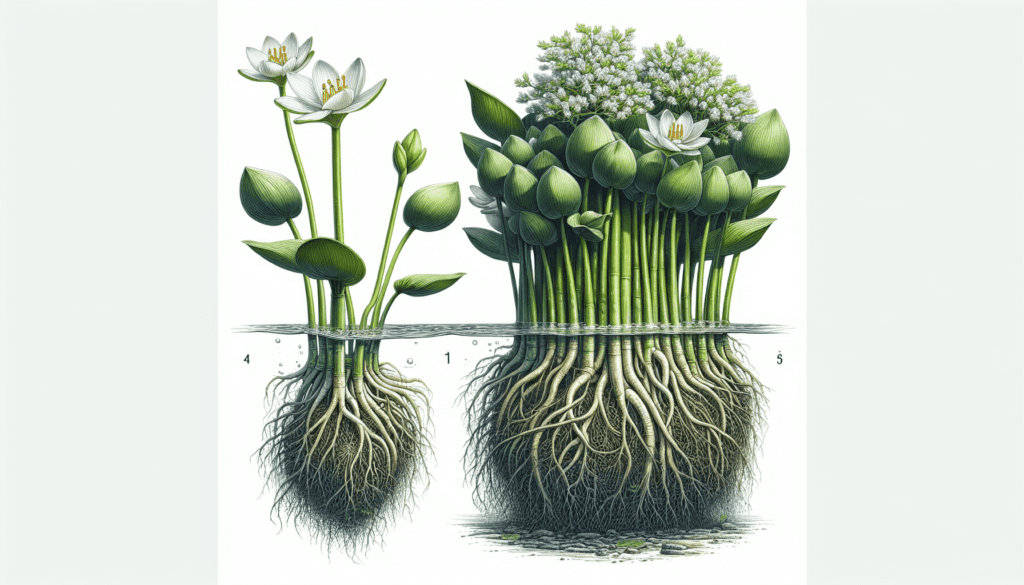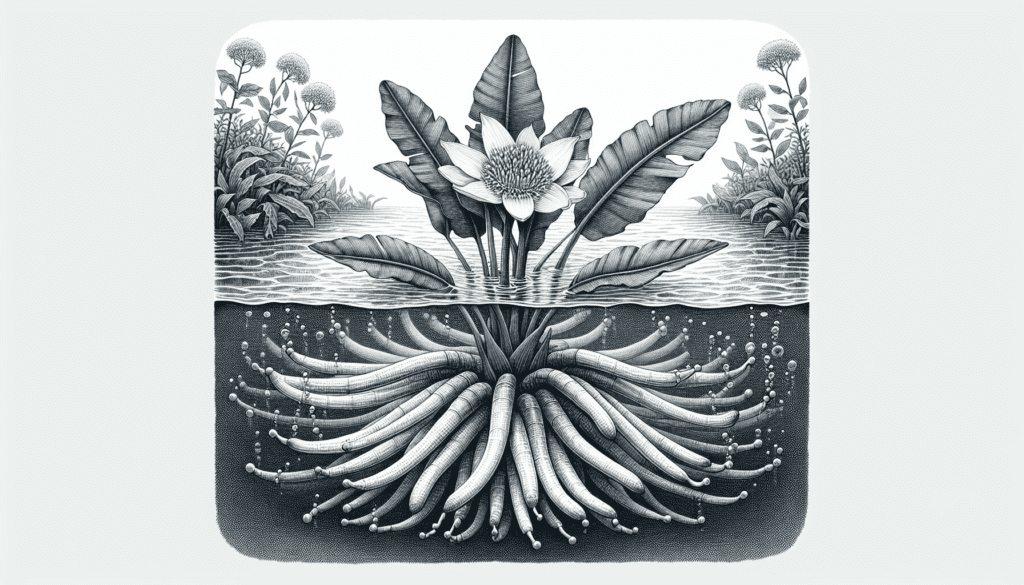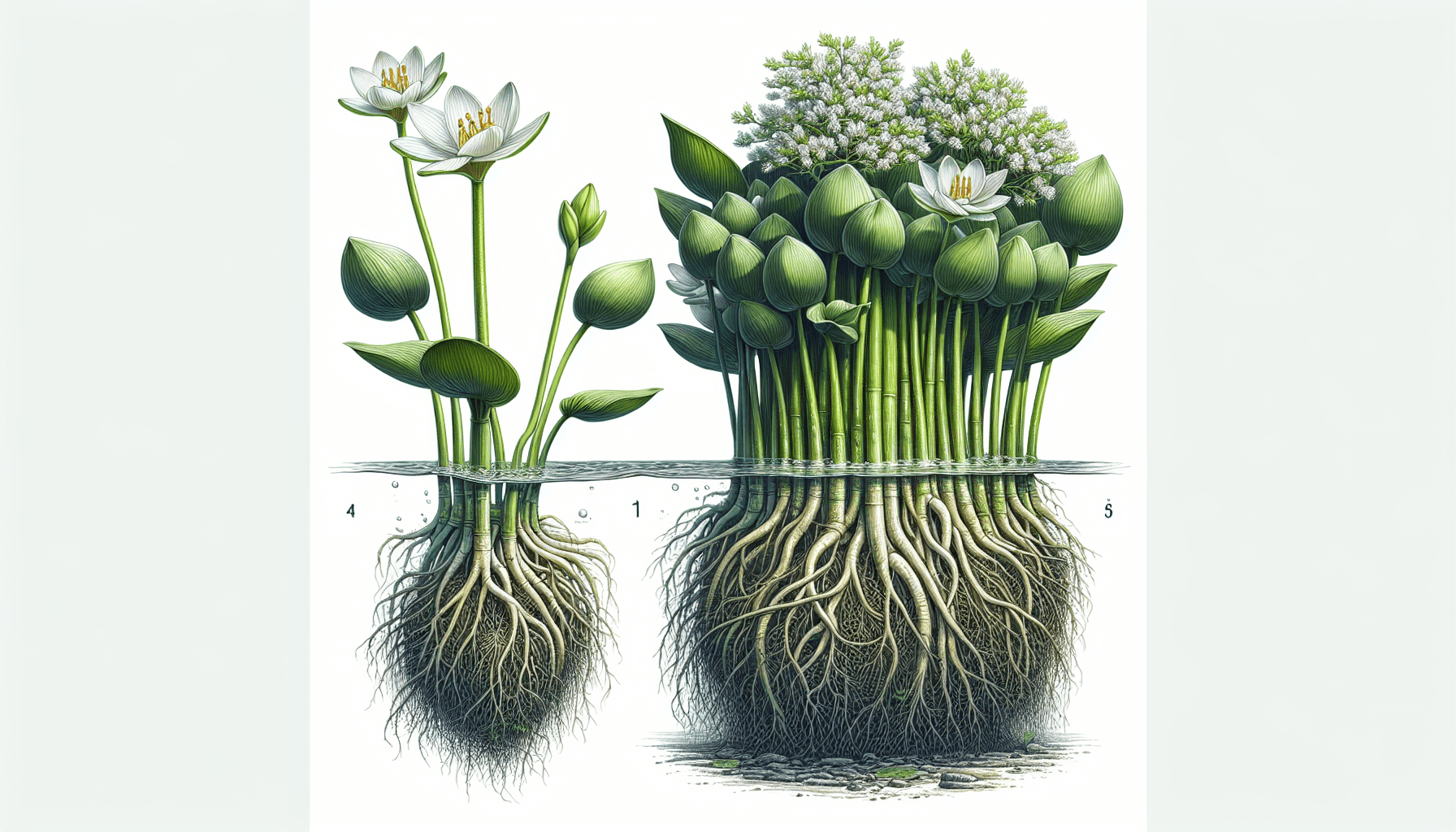In this erudite discourse, you will embark on a journey of understanding and discovery about the aquatic plant known as the Banana Lily. The Banana Lily, not only intriguing for its distinctive name, but also for its unique growth patterns and adaptive abilities, holds a special place within the flora found under the water’s surface. Casting light on its profile, including its botanical characteristics, ecological value, and manifold uses, your curiosity will be sated as it leads you to an amplified comprehension of this truly unique aquatic emblem.
Overview of the Banana Lily
General Description of the Plant
The Banana Lily is a fascinating aquatic plant characterized by its unique appearance and interesting features. Its botanical name is Nymphoides aquatica, and it is primarily known for its graceful floating leaves and charming white flowers with distinct yellow centers, reminiscent of water lilies. However, its notable “banana-like” tubers, which anchor it to the substrate in water bodies, are the characteristic that gives it its common name, and which distinguish it from true water liles.
Natural Habitat and Growth Conditions
As an aquatic plant, you will naturally find the Banana Lily thriving in calm, stagnant or slow-moving water bodies. Its favored habitats include ponds, marshes, and the slow-moving streams and ditches of the southeastern United States. In terms of growth conditions, the plant thrives best in full to partial sunlight, warm temperatures, and soft, slightly acidic to neutral pH water.
Unique Features Distinguishing the Plant
The Banana Lily is set apart from other aquatic plants by a number of unique features. First, its “banana-like” tubers are a distinctive element that not only serve as a namesake for the plant but also play an important role in its growth and nutrition. Additionally, unlike most aquatic plants, it produces attractive white flowers, making it a much sought after plant in the aquascaping world.
Scientific Classification of the Banana Lily
Family and Genus of the Plant
The Banana Lily is a member of the Menyanthaceae family, which is made up of aquatic and marsh plants. It belongs to the genus Nymphoides, a Greek term that literally translates to “a nymph-like creature,” most likely in reference to the attractive floating leaves and flowers of these plants.
Scientific Name and Its Origin
The plant’s scientific name, Nymphoides aquatica, refers to its similarity to water lilies (genus Nymphea) and its aquatic lifestyle. The genus, Nymphoides, encompasses species sharing a flowering pattern similar to water nymphs or lilies, while the specific epithet, aquatica, signifies the plant’s adaption to an aquatic environment.
Native Regions and Distribution
This plant is native to the southeastern United States, notably Florida and the Carolinas. However, due to its popularity in aquascaping, it has been distributed worldwide and can now be found in various parts of Europe, Asia, and other regions.

Physical Characteristics of the Banana Lily
Appearance and Size of the Plant
In terms of its physical characteristics, the Banana Lily is a small aquatic plant. Its leaves, often reaching only about 3-6 inches in diameter, float on the water’s surface. These leaves are heart-shaped, green, and wavy at the edges. Underwater, the plant has long slender stalks which contain ‘banana-like’ tubers, packed with nutrients, that aid in the plant’s growth.
Growth Pattern and Speed
The growth pattern of the Banana Lily often depends on the conditions of its environment. In favorable conditions, it can grow relatively fast. The leaves grow from the base of the plant, each attached to a slender stalk that connects to a tuber at the bottom. Under optimal conditions, one plant can rapidly spread across the surface of the water body it inhabits.
Leaf Morphology and Structure
The floating leaves of the Banana Lily are broad, heart-shaped, and have undulating edges. They are vibrant green and contain thin veins, presenting a unique texture. The leaf stalks are slender and elongated, allowing the leaves to float while still anchored to the plant’s tubers. These tubers, which store nutrients, are thick, fleshy and bear a striking resemblance to bananas, hence the common name.
Banana Lily’s Reproduction Cycle
Description of the Flowering Phase
The Banana Lily’s flowering phase is truly a spectacle to behold. When mature and under favorable growing conditions, the plant produces charming little white flowers with yellow centers, which perch above the water’s surface. The flowers typically bloom in summertime and carry a faint but pleasant fragrance.
Pollination Mechanism
In its native habitat, the Banana Lily is primarily pollinated by insects attracted to its flowers’ appealing scent and look. The flowers have special structures that facilitate the attachment of pollen to visiting insects. When an insect visits a new flower, it inadvertently transfers this pollen, thus promoting cross-pollination.
Seed Development and Dispersal
After successful pollination, the Banana Lily’s flowers develop into seed pods. These pods eventually mature and release numerous tiny, floating seeds into the surrounding water. The seeds spread naturally with the flow of the water, enabling the plant to colonize new areas.

Role in the Ecosystem
Importance for Water Bodies
The Banana Lily plays a crucial role in its native aquatic ecosystem. Its floating leaves create a fair amount of shade, reducing water evaporation and maintaining water temperatures. Additionally, its dense growth provides a form of shelter to small aquatic creatures, and can also serve as a spawning ground for some species of fish.
Impact on Local Wildlife
This plant also greatly benefits local wildlife. Its leaves offer a hiding place for small aquatic creatures from predators, and its flowers attract a variety of insects, which in turn serve as a food resource for insectivorous birds and animals. Furthermore, the seeds of the Banana Lily often serve as a source of nutrition for water birds.
Environmental Benefits
In terms of environmental contributions, the Banana Lily aids in the reduction of water pollutants. The plant aids in bioremediation, taking up harmful substances from the water and converting them into harmless organic matter. This not only improves water quality but also promotes a healthier environment for other aquatic species.
Properties of the Banana Lily
Usage in Traditional Medicine
It is worth noting that while the Banana Lily’s medical properties have not been extensively researched, some traditional healing practices suggest that the plant might have potential health benefits. In some cultures, different parts of the Banana Lily have been used for wound healing, treatment of skin problems and even for some digestive disorders.
Nutritional Content and Potential Health Benefits
Although the specific nutritional content of Banana Lily has not been thoroughly researched, it is generally accepted that like many aquatic plants, it is likely to contain valuable nutrients including vitamins, minerals, and antioxidants. These could potentially offer a range of health benefits when included in a balanced diet.
Allergenic Potential and Toxicity
In general, the Banana Lily is not considered toxic and is usually safe for both humans and animals. Nevertheless, there could always be exceptions, and some individuals, particularly those with certain allergies or sensitivities, may experience mild reactions. As always, it is recommended to seek professional guidance before adding new plant species into one’s diet or health regimen.
Cultivation and Care of Banana Lily
Ideal Growing Conditions
To cultivate Banana Lily at home, it’s important to mimic its natural growth conditions as closely as possible. This means warm water (72-82°F), a pH level between 6.0 and 7.5, and sufficient sunlight or artificial lighting. It is also beneficial to provide a fertile substrate for the tubers to anchor and to feed on.
Common Pests and Diseases
While the Banana Lily is generally quite hardy, it can occasionally suffer from a few common aquatic plant pests and diseases. This could include snails, aphids, and certain types of water molds. Vigilant care, including regular checks, can help identify and resolve these issues before they cause serious harm to the plant.
Pruning and Maintenance Tips
Keeping the Banana Lily in good condition requires regular pruning and maintenance. Dead or excessive leaves should be removed to prevent them from blocking light to other aquatic plants and to maintain water quality. If the plant starts to overrun your water space, reducing the number of tubers can help control its propagation.
Use in Aquascaping
Popularity Among Aquascapers
Thanks to its unique characteristics and pleasing aesthetics, the Banana Lily has become exceedingly popular in the world of aquascaping. Its ability to generate shade is particularly useful in aquascapes, offering areas of respite for light-sensitive species and creating a captivating contrast of light and shadow on the water’s surface.
Incorporating Banana Lily in Various Aquascape Styles
Whether you’re crafting a nature, biotope, or even a jungle style aquascape, the Banana Lily can be a beautiful and functional addition. For optimal placement, consider planting it towards the rear or sides of the tank, allowing it to provide background height without obstructing shorter foreground plants.
Compatible Fish and Aquatic Species
The Banana Lily is a good choice for various community aquariums, as it is compatible with a wide range of aquatic species. This includes small to medium-sized fish, shrimp and snails. However, it may not fare well with herbivorous fish species that feed on plant material, as they could damage or consume the plant.
Banana Lily’s Role in Aquaculture
As a Natural Water Purifier
One of the Banana Lily’s most significant roles in aquaculture relates to its ability to improve water quality. Through phytoremediation, these plants can absorb and break down harmful substances in the water, essentially acting as living filters.
As a Food Source for Fish
While primarily ornamental, the Banana Lily can also serve as a supplemental food source for certain species of fish. The plant’s soft leaves can be grazed upon, providing a natural option for herbivorous fish. Likewise, its matured seed pods may serve as occasional nibbles for some fish.
Impact on Fish Breeding
Banana Lily leaves can offer a natural and sheltered spot for certain species of fish to lay their eggs, often proving beneficial in fish breeding scenarios. The dense growth of the plant can also provide safety for the juvenile fish as they grow.
Possible Threats to Banana Lily
Climate Change Effects
Like many aquatic plant species, the Banana Lily could potentially be negatively impacted by climate change. Factors such as rising water temperatures, drastic alterations in precipitation patterns and increased instances of extreme weather events may all pose challenges for this plant’s growth and proliferation.
Human Activities Posing Risks
Urban development, wastewater dumping, and other anthropogenic activities can seriously affect the Banana Lily’s habitats. These activities often lead to water pollution, eutrophication, and habitat destruction, all posing significant threats to the plant.
Invasive Species and Their Impact
The introduction of non-native or invasive species can have a devastating impact on the Banana Lily. These species can out-compete the Banana Lily for resources, inhibit its growth, and even lead to its local extinction. Care should be taken to prevent the introduction of such species into its natural habitats.
